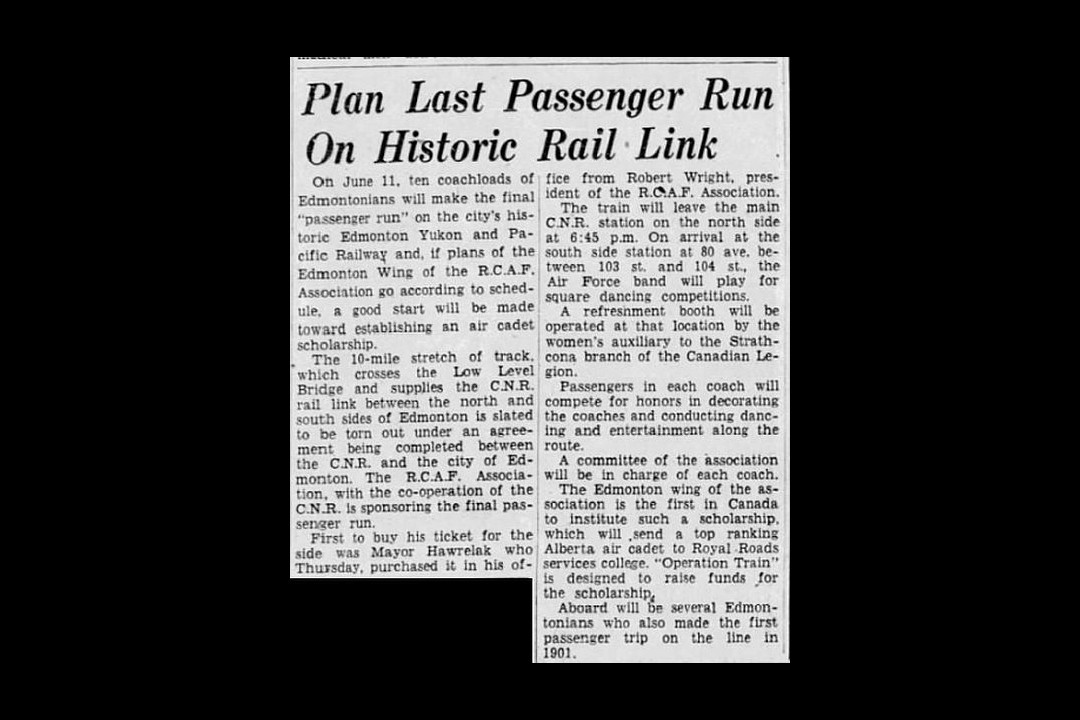On this day in 1952, Edmonton's littlest railway was preparing to see its final passenger train.
There's a peculiar trend in the history of the Edmonton area's railways; they have a habit of being named after places they don't actually go. When the Edmonton Yukon and Pacific Railway closed in 1952, it had only reached one of the destinations in its name. At its peak, the rail line stretched from south Edmonton to Stony Plain — just a teeny bit short of either Yukon or the Pacific.
The EY&P owed its existence to another transport system with a slightly misleading name: the Calgary and Edmonton Railway. When the C&E was finished in 1891, it didn't actually reach the settlement of Edmonton. That was deemed too expensive. Instead, it stopped just south of the river, in the newly formed town of Strathcona. (At the time, the area was sometimes referred to as South Edmonton, so maybe the C&E gets a pass.)
With no rail link on the north side of the river, many assumed that Strathcona would flourish and Edmonton would wither away. That might have happened, if not for the EY&P Railway and the Low Level Bridge. The federal government built the bridge in 1900, making it the first to cross the North Saskatchewan. Only pedestrians and wagon traffic could cross it at first. But in 1902, the first EY&P train steamed over the river. Edmonton was finally connected by rail to Strathcona, and thus, the rest of the continent.
There was so much excitement around that first crossing that the mayor at the time, William Short, declared it a civic holiday. Far from disappearing, Edmonton continued to grow, eventually amalgamating with Strathcona in 1914.
A few years after its first crossing, the EY&P would merge with a third company: the Canadian Northern Railway (which bucked the trend by being both Canadian and northern). In 1906, it was extended to Stony Plain, with an eventual eye on Vancouver. But money woes and more practical routes west ended those plans.
By the 1920s, the company was bankrupt and being managed by the federal government, which began tearing up rails to consolidate the lines. The former EY&P continued to limp along for the next few decades, shuttling coal and pigs across the river occasionally. It was eventually shut down in the 1950s and the tracks were ripped up.
While the EY&P is long gone, the city still carries some of its history into the modern day. The fact that Edmonton exists at all is the major one. And many of the company's right-of-ways through Mill Creek Ravine have now given over to trails and multi-use paths. And of course, there is the Low Level Bridge, which has spanned the North Saskatchewan for nearly 125 years.
Its age is beginning to show, however. Recent assessments have determined that the bridge is in need of major rehabilitation in the next year or two to extend its lifetime.
This is based on a clipping found on Vintage Edmonton, a daily look at Edmonton's history from armchair archivist @revRecluse — follow @VintageEdmonton for daily ephemera via Twitter.

